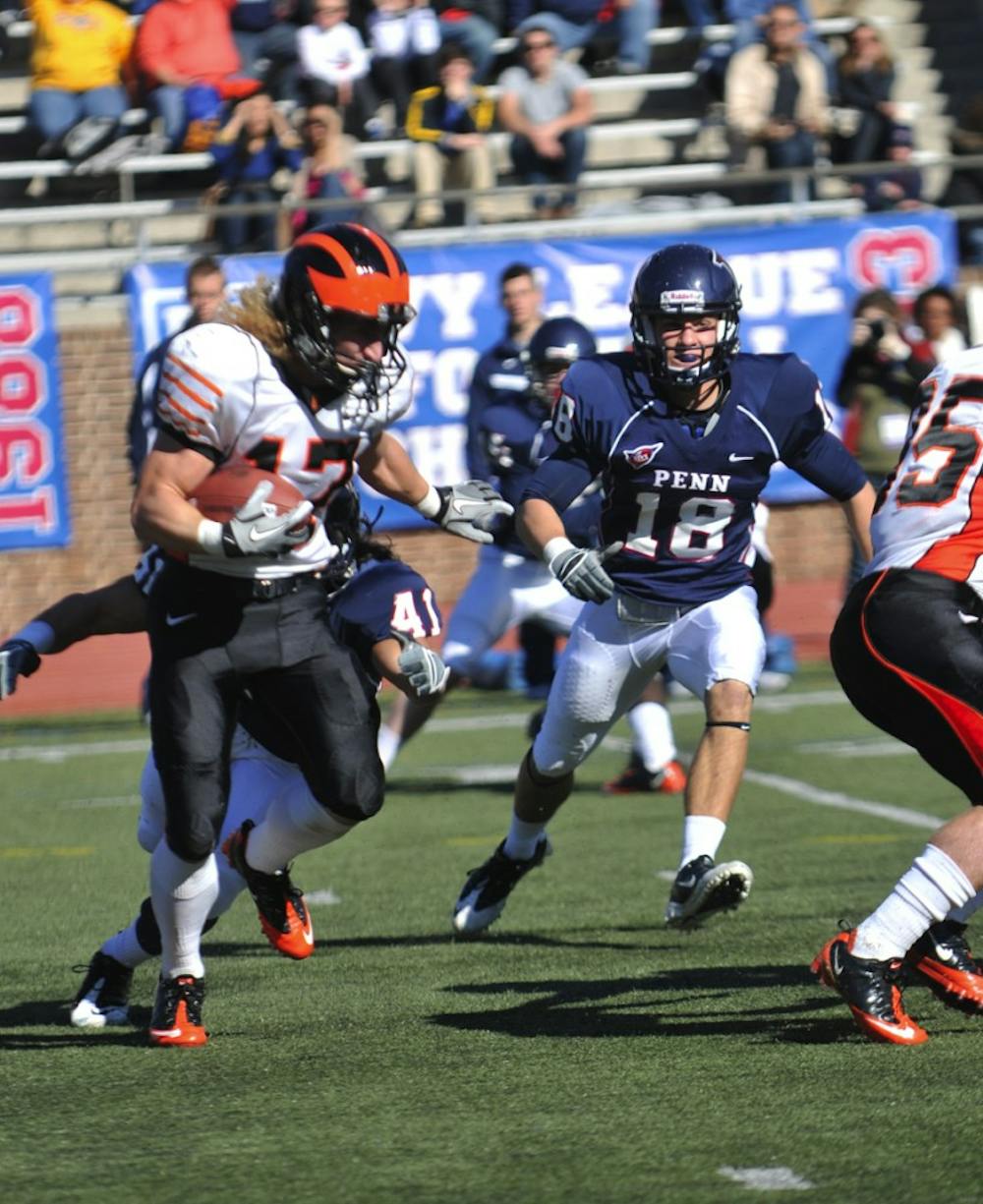
For five years, the Penn football program has encouraged members of the community to “Be the Match,” as part of the National Marrow Donor Program.
And in the offseason, junior defensive back Dan Wilk became a match and helped save a man’s life.
Wilk, who was tested at the team’s annual drive last year, was informed over the summer that he was a potential match. Unsure if he would be able to donate, Wilk asked if there was someone else available. But when he found out he was the only match, he “took that as an opportunity,” and agreed to donate.
While Wilk did not meet the person who received his donation, he later learned that he was helping a 32-year-old man battling leukemia.
“He had a zero-percent chance to live if I didn’t [donate], and then it went up to I think 60 [percent] if I did, so I figured he deserved a shot,” Wilk said.
Last month, he received an update on his donor recipient and found out he is out of the hospital and doing better.
“From what I understand, if you’re out of the hospital that fast, that must mean that it went well,” Wilk said.
A meeting between the two has yet to happen, but it could be arranged if the recipient wants to meet Wilk.
The junior from Bethlehem, Pa., is not the first Penn football player to be matched through the program. In May 2011, then-junior tight end Robert Gawlas and then-senior defensive back J.P. Grant each donated bone marrow to save two lives in a two-day span.
“I just wanted to do a good thing,” Gawlas told The Daily Pennsylvanian in 2011. “Any way to help somebody out, I was going to do it. Even if it was somebody I didn’t know.”
Grant, meanwhile, had a personal connection to marrow donation and felt he had an obligation to help when he discovered he was a match.
“One of my older cousins, Eric, had leukemia when he was in college, and his brother, Kevin, was the donor for him,” he said in 2011. “That wound up saving his life.
“With that in my family’s history, I realized it was a tremendous opportunity to save somebody’s life.”
In order to donate, players must undergo testing to ensure that a donation would be safe for themselves and their potential recipients. Marrow donors today can opt to go through a non-surgical, outpatient procedure, called “PBSC donation,” for peripheral blood stem cells.
The initiative for football players to be part of Be the Match was started by Villanova coach Andy Talley, who has spent almost 20 years working to bring attention to the need for marrow donors.
More than 25 college football teams participated in the program in 2012.
While Wilk says it’s a “pretty cool feeling” to know he saved someone’s life, he said he tries not to think about it as some grand accomplishment.
“I kind of think of if I was in that situation,” he explained, “I would kind of hope somebody would help me out.”
Sports Editor Mike Wisniewski contributed to the reporting of this article.
SEE ALSO
The Daily Pennsylvanian is an independent, student-run newspaper. Please consider making a donation to support the coverage that shapes the University. Your generosity ensures a future of strong journalism at Penn.
DonatePlease note All comments are eligible for publication in The Daily Pennsylvanian.




